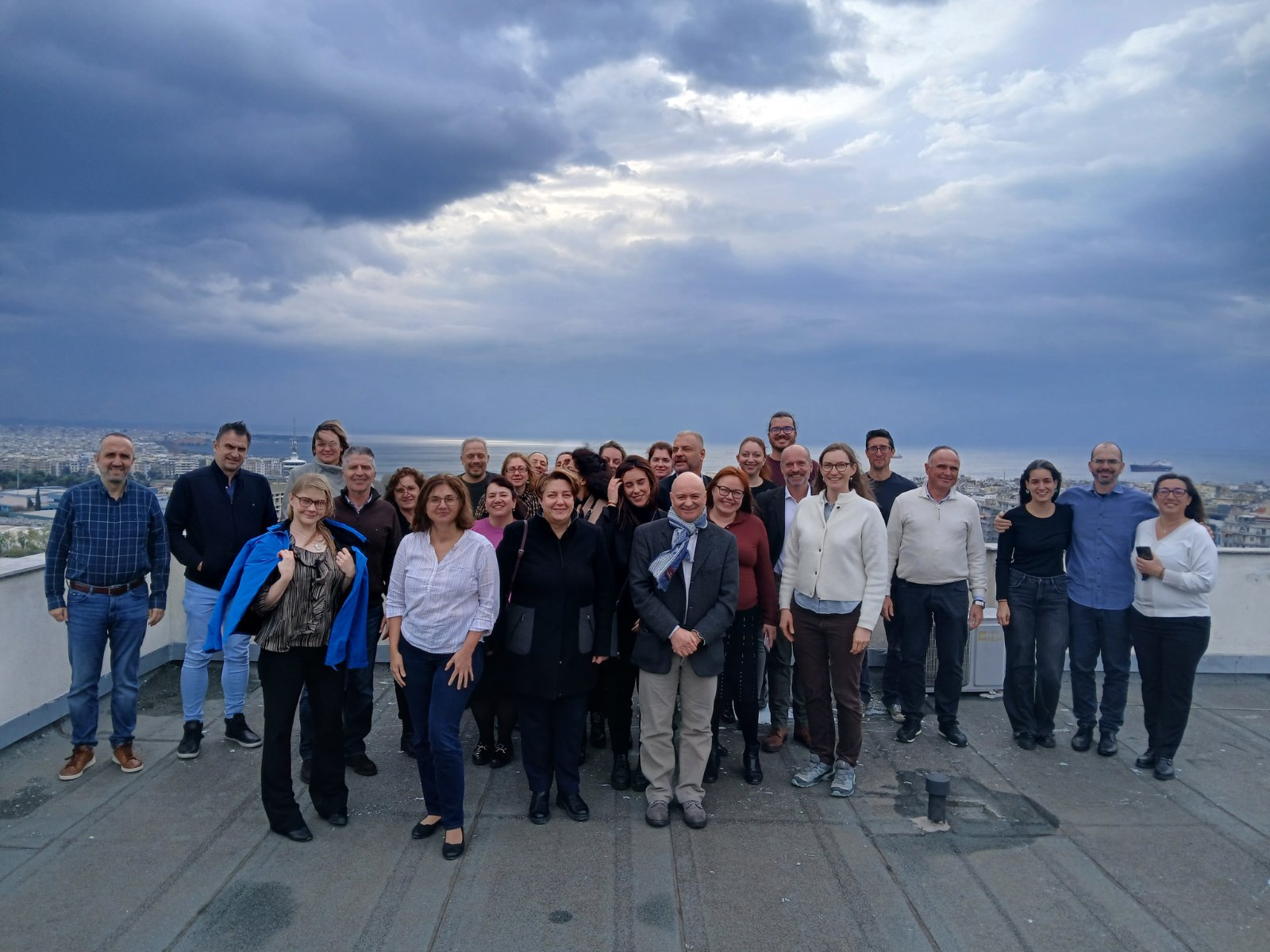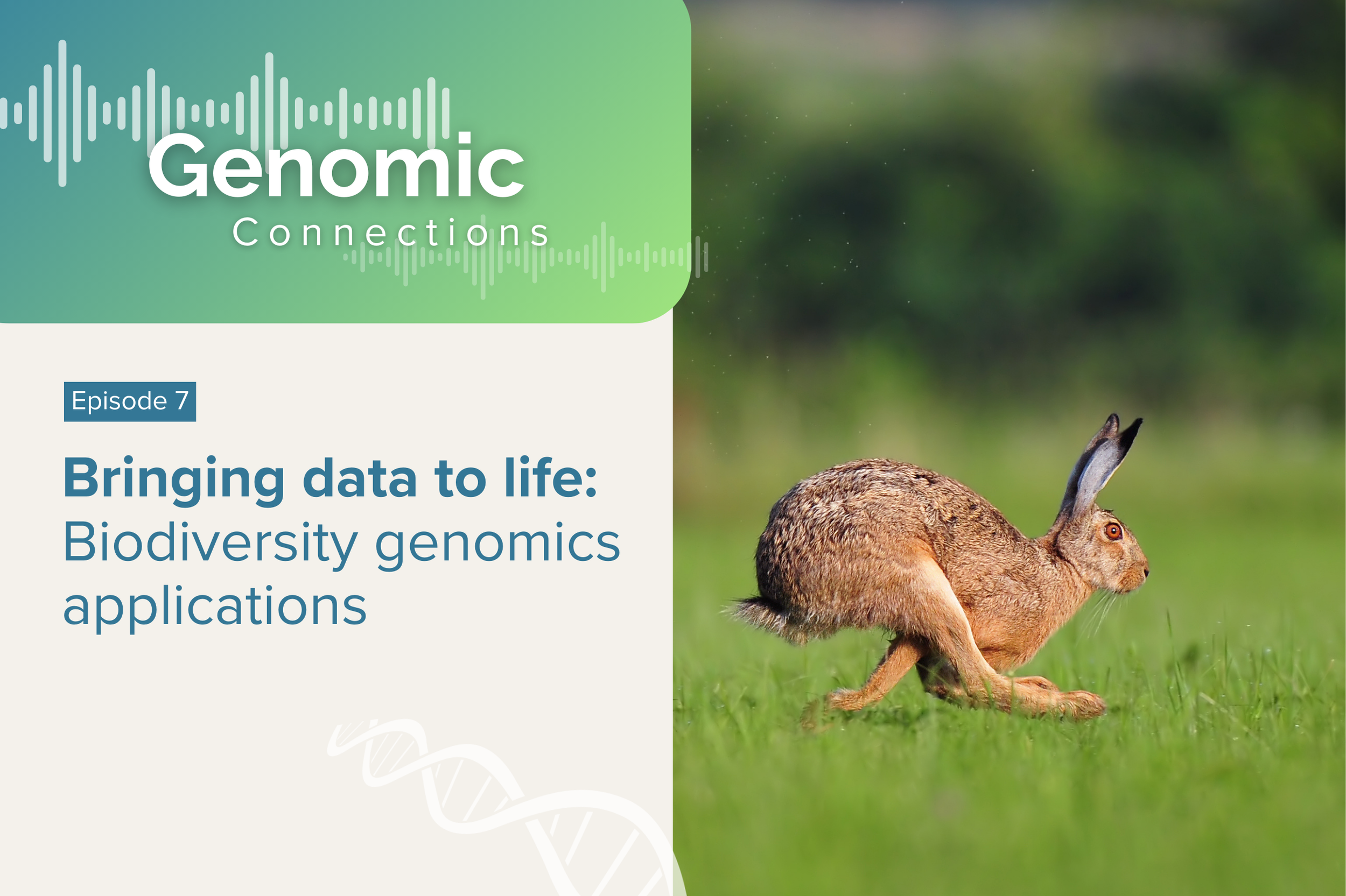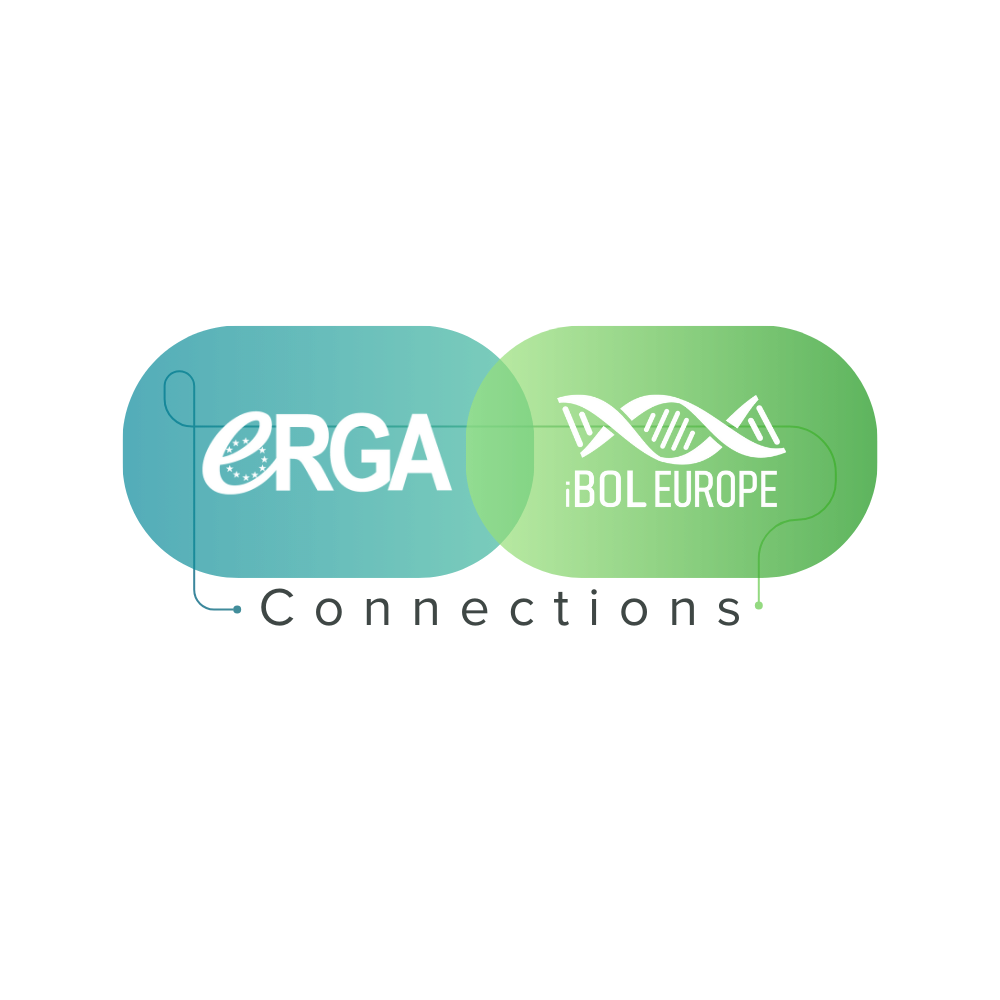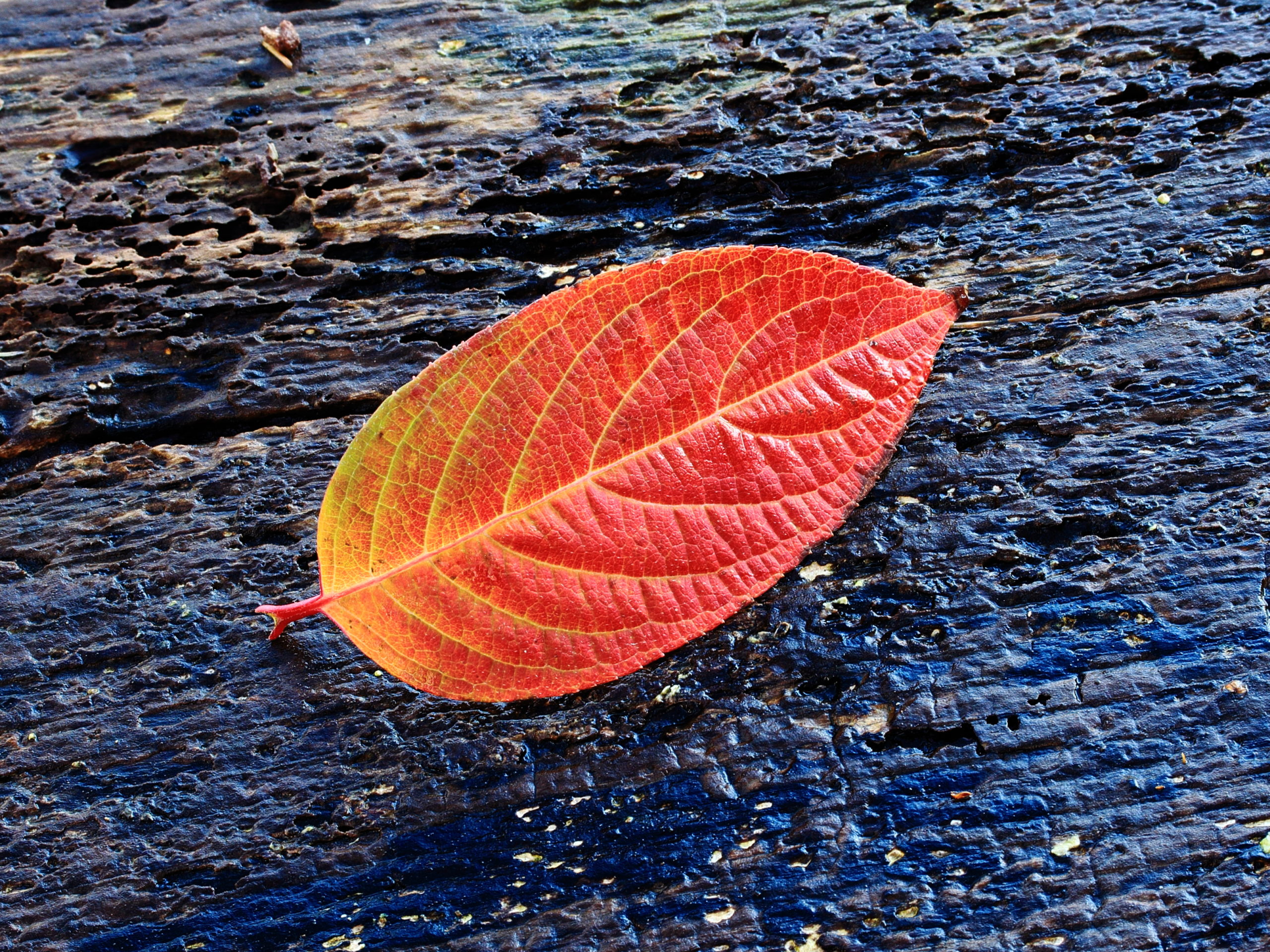Within the Biodiversity Genomics Europe (BGE) project, we’ve been collaborating with ERGA (the European Reference Genome Atlas) on “Connections,” a series of blog posts dedicated to Biodiversity Genomics that are published monthly since January 2025.
Now, “Connections” has also turned into a podcast, “Genomic Connections,” further expanding ways to reach our audience. We will release an episode of “Genomic Connections” per month, starting in April 2025, and here you can listen to the show’s trailer. Each episode will explore a different step of the genomic workflow, always highlighting the many connections between the two communities and the advantages of joining forces for better outcomes for biodiversity. For each “Genomic Connection” episode, the podcast hosts Christian de Guttry (ERGA Project Manager) and Kasia Fantoni (iBOL Europe Community Manager) interview experts who help boost genomic science and infrastructure in Europe: the challenges they face, the innovations they develop, and the impact of their work.
You can listen to Genomic Connections on Spotify and PocketCast.
For the first episode of Genomic Connections, “Frozen Futures – The role of Biobanking in Biodiversity Genomics,” Kasia and Christian are joined by Jonas Astrin and Camilla Di Nizo from the Leibniz Institute for the Analysis of Biodiversity Change (LIB) to talk about the essential role of Biobanking.
The episode’s full Transcript (AI-generated) is available below the credits.
Credits
The episode is licensed under a CC-BY 4.0 license.
“Genomic Connections” is written and produced by Christian de Guttry, Kasia Fantoni, Luisa Marins and Chiara Bortoluzzi.
Graphic design by Luisa Marins. Postproduction by Kasia Fantoni.
Music (intro and outro): “Nostalgic Reflections” by Ant.Survila (c) copyright 2025 Licensed under a CC-BY-NC 4.0 license. Ft: airtone.
Biodiversity Genomics Europe is a Horizon Europe project funded by the European Commission, the Swiss Confederation and the United Kingdom.
Episode #1, “Frozen Futures” Transcript
Kasia:
Oh, Chris, I had a bit of a rough return home because my fridge broke. Luckily, most of the stuff inside didn’t spoil, but I had to throw some tiramisu leftovers in the trash.
Christian:
Oh, yes, that sounds like a rocky welcome home. And while it’s horrible that you had to throw out your tiramisu, it’s good that most of your food didn’t spoil,
Kasia:
yes, indeed, it mainly was food that wouldn’t risk much deterioration,
Christian:
Good for you; differently from your food, the samples Biogenomic Europe work with are very sensitive to outside temperatures, and would have suffered way worse than your tiramisù.
Kasia:
Indeed, we need to store them very safely and as soon as possible, to make sure that they preserve their genomic information. And that’s where biobanking comes in. In today’s episode, we will talk about bio banking with Jonas Astrin and Camila Di Nizo.
I am Kasia Fantoni iBOL Europe Community Manager,
Christian:
I’m Christian de Guttry, ERGA project manager, and you’re listening to Genomic Connections, a podcast about Biodiversity Genomics.
Kasia:
For this episode, we are joined by Jonas Astrin and Camila Di. Both of them are from the Leibniz Institute of the analysis of biodiversity change in short, LIB. Jonas Astrin is the head of the section and curator of the biobank of LIB and he is also responsible for the strategic development of the biobank. He is also active in various biobanking networks such as the global genome biodiversity network and the International Society for biological and environmental resources. Jonas is also engaged in biospecimen research. Camilla di Nizo oversees the cell culture lab at lib and there she manages daily Sample Acquisition. Her work includes developing protocols for obtaining cryopreserving cells from non model species and conducting karyotype analysis where needed.
Christian:
LIB was created by joining forces between the zoological research Museum in Koenig in Bonn and the Museum of Nature of Hamburg. So this organization is dedicated to studying how biodiversity changes over time, supporting conservation effort and sharing knowledge with the public. The Lib biobank stores many kind of samples, including DNA from animals tissues, living cells, small organisms and even environmental samples in liquid nitrogen at minus 190 degrees Celsius, and personally, I find it wonderful to know that these samples and the associated data are available for researchers
worldwide.
Kasia:
Fantastic. Let’s get started. So bio banking can sound like a fancy cold storage system in your own words, what is so exciting about it and why it is so critical for Biodiversity Genomics?
Jonas:
Well, hello, thanks for the question. And yeah, why is it exciting? If you are a nerd, it definitely is exciting because science is exciting to nerds. If you’re not a nerd, then you should tune out, probably, but being a nerd as we are, bio banking is great because it enables science. You can do some proper scientific research, at least at the molecular level, without having biobanks. Biobanks make research repeatable in a way, because they archive the samples that have been used, you can prove the research wrong using those samples. You can repeat the research, and as long as we have the material, the collection, that can be accessed over and over again. Bio banks are just one component, because you also have morphological collections, as we call them, where the whole animals are usually stored, or, yeah, parts of the organisms at least, that can help identify them. So yeah, apart from repeating or making science repeatable, biobanks also make it possible to expand on previous research, so you can use specimens that have been amply described or analyzed and the results published on them, and use them in another context. And this just grows the knowledge net and makes knowledge or makes the samples more meaningful every time they are reused. Also you can completely or base completely new studies on the material so it’s more sustainable. You don’t have to go out and recollect every single time and just use the material that has been already collected and. And use that in new studies.
Christian:
That’s wonderful. So basically, for what I understood, biobank, biobanks are a legacy for the future of research, and we mentioned before that within the biobank, you can also store DNA at those super low temperatures, and we often talk about DNA as the book of life. So if your bio bank were a library, how would you describe your cataloging system and the rail collections you are most proud of?
Jonas:
Okay, so that’s yeah, two parts of the question. Our catalog that we have is not too different, different, actually, from a library catalog, although, strictly speaking, we would rather be an archive than a library, because a library has copies of the same media that exists several times, and everything that we have are unique objects, so more of an archive of life, and yeah, the catalog is a database that’s maybe not too exciting to look at if you’re not a nerd in another area and in the data area, but it enables a lot of data sharing. This database is structured by common data standards, and we deal out the data to both our own portal at the lib website, and to the ggbm the that is the global biodiversity biobanking network. That’s an aggregated aggregator site where lots of different biobanks from throughout the world show their data and make it accessible. Yeah, the second part of the questions, a question about our holdings. So we have, in general, generally speaking, we have mostly animals. We have also quite a few environmental samples, like sediment samples or filtered water samples. But from those animals, it’s mostly vertebrates and arthropods, insects, spiders, crabs, etc. In terms of material, it’s either tissue or cells or DNA and yeah, regionally, they come a lot of them, our samples, come from Central Europe and particularly Germany, mostly probably based on the fact that we have been working in the German bucker life project for over a decade, and has accumulated lots of samples regionally. And it makes sense to structure collections regionally. But we also, through other projects, have lots of samples, for example, from the Caucasus area. We have quite a few samples from Africa, few from Latin America and basically worldwide, where we collaborate with lots of different partners. The most exciting sample, I had to think a bit about it, but I think I would say maybe a wooly mammoth. We got a hair sample from a wooly mammoth that was came from the permafrost and Todd, and we were able to extract DNA from it and did a DNA barcode on the mammoth. So if you see a hairy elephant walking around and want to snatch a hair and DNA barcode it to make sure it is a wooly mammoth, you can compare it against our data.
Camilla:
Yeah, can I compliment a little bit and talk about some other special samples that we We are also proud of? So we had sales from the Soho dove, which is unfortunately already extinct in the wild, as well as other critically endangered species such as the European eel or the yellow crested cacao or the Madagascar spider tortoise. And some of these species are still poorly known, despite their threat in its status, which we believe that’s very important to have this in our collections.
Kasia:
Thanks so much both. It seems like you need a lot of technological advancement and technology and technology, generally speaking, to preserve all these very precious samples. And we know that technological advancement is running pretty fast. So is there any recent innovation on storage methodologies that made you think like, this is the game changing methodology or technology for bio banking?
Camilla:
Well, I think what we consider an innovation in our bio bank is the recent creation of our cell culture bank. Although it’s not a it’s a an old technique. We only recent people are realizing the importance of archiving sales due to the range of possibilities that sales provide. It because cells can carry identical copies of the genetic information, giving high quality material for genomic studies, which is particularly reported nowadays, doing due to the increase number of these projects. And additionally, because cells can provide chromosome information, we have observed a recent increase in interest in cytogenetic studies, which is also old, but now people, it’s becoming more popular because it’s complementing these genomic projects.
Christian:
I have the impression that the permafrost was our planet biobank for a long time, but now we are little by little, losing it. Unfortunately, I have a question about iBOL Europe and ERGA. So both rely on high quality samples, and we know that the cold chain is quite important for high quality sample, but these two communities, they do different kind of research. And how do you tailor if you tailor biobanking practices to meet the needs of these two communities?
Jonas:
So generally speaking, I would say that to be properly set up as a biobank will make will enable you to cater to all kinds of different communities, including the bar coding and the genome sequencing community. And there’s nothing special we need to do now to adapt to these projects. But you need a proper database. You need good temperature monitoring, ideally redundant temperature monitoring in your collections, you need good service instruments, and my take is that you would also need liquid nitrogen to to make sure that you have the best possible preservation, particularly for samples that go to the genome stream, and definitely for the cells that Camilla mentioned, and yeah, you also need to be in a network, and you need to be able to show your data through through portals like GGBN. For us, the situation is pretty good. We were lucky that we had been approved a new building that we’re moving into this year, and we have a big new cryo facility with lots of shiny, huge liquid nitrogen tanks that even our DNA goes into minus 190 degrees storage. So we could make sure that everything is really perfectly stored, and that helps for bringing samples in so we have cryo cards that move around and cryo pots that we can use to solve the samples, all at liquid nitrogen temperatures, and that helps with the cold chain that Camilla is now going to comment on, yeah.
Camilla:
Now what I wanted to comment is that having these standardized procedures for collecting, transporting, storing samples, applies to all genomic projects. So we we try to encourage, whenever possible, to have step frozen tissues or trying cell culture, because it’s two approaches, yeah, the high quality DNA for any Genome Project, either iBOL (Europe) or ERGA.
Kasia:
I think that when talking about bio banking, so we talk about storage, but also logistics, I think they play an important role. So we have different specimens coming from different region of Europe, at least to LIB so and what is the biggest challenge that you face when shipping or receiving samples, especially when we talk about remote out of permafrost or international locations?
Camilla:
Yeah, I think regarding the transport of flash frozen samples or frozen cells is very challenging, because not everybody has access to dry ice or a dry shipper with liquid nitrogen, especially if we are talking about collecting remote and bringing to the to the bio bank, to the lab and additionally specialized couriers are normally very expensive and subject to specific regulations, which makes more difficult, I would say, thinking about the cells. So transporting tissues to grow from the field, to grow the cells in the lead requires a specific type of medium with antibiotics to prevent contamination. And this can be an obstacle because it has to be kept at constant temperature, four degrees, not less than that. And also, in my case, what. Is a little bit challenging is that the time limit to process this, these samples, to grow the cells, so I have to process as soon as possible to increase the chance of having cells. So finally, it’s important to mention that we need all the pyramids, and this sometimes could be quite challenging, especially depending on the country
Christian:
To keep pace with time, we could discuss, we should discuss about artificial intelligence and machine learning that basically are two similar concepts. Do you think that this kind of technology, I mean, all of the genomic lab in the world are now thinking on how to apply these technologies to their own research. And do you think that this technology play your role in how you organize or monitor the specimen, or in any other aspects within your facility?
Camilla:
Yes, I we believe that artificial artificial intelligence would help us to ensure accurate sample tracking and prevent misleading for example. Also, we think that in the future, we will benefit from AI to the text, sample contamination, degradation, cell viability. So
the so far, we don’t foresee that much need, actually, because lots of stuff is done manually and needs eye control. So it’s also a risk to apply AI to an unlimited extent. So for bio banking, we’re a bit old school on that.
Kasia:
So do you know, like, there is a lot of thing going on, I guess, in your lab, but is, is, can you give us a glimpse of the road ahead that you have, for instance, if you have any be important milestone or project you want or hope to tackle at your biobank?
Jonas:
Yes, so an important challenge for the future of biobanking in general is to work towards the harmonization of biobanks and to grow the network, particularly biodiversity, because we have some catching up to do, but also generally, I mean biobanking is most widespread in the human biobanking area with which we interact as well, and it’s important to interact with those biobanks, because technologically, they’re usually more advanced, and best practices are usually done together with those biobanks, as we do in isper But yeah, I mean in biodiversity, we have lots of small communities storing frozen samples in their own Way, and in part, they need their own way, because they are also particularly collected and need to be preserved in a particular way. But still, there are some chances to better standardize how we’re doing this, how we’re collecting information on them, how we’re sharing that information, and how we are talking about options to strengthen the bio banking community, so we have all these little tribes of bio banks and molecular collections that we need to bring closer together, get them to talk more, interact more, use synergies and build better joint projects, and GGBN can be a key player to do that and harmonize and streamline the processes. And, yeah, this is about protocols. This is about data. This is about graph writing and also science policy, I guess.
Camilla:
Yeah, regarding the cell, the plan is to archive the largest number of species, especially those that are considered more difficult to obtain the cells. In the case of vertebrates, for example, amphibians, the group that suffers more now in that we are living this climate crisis, reptiles and fishes are also difficult to get cells, so the goal is to develop protocols to have more of these in our collection. And one of our wishes is to Coronavirus their cells from invertebrates, particularly arthropods, to cover this group with the largest number of species, we have already started some tests, which has proven very difficult, but I’m positive that this could be our next big step.
Christian:
That’s super interesting. Actually, bio banking is a an evolving field of research, we can say, given that we are talking talking about the future. So imagine a future scientist stumbling on one of your stored viads 50 years from now. So in 2075 What do you hope they will be able to discover or be able to do with that sample?
Camilla:
Yeah, I mean, my first thought would would be that that person doesn’t stumble, that he or she would, in a very organized, very neat way, go to the dgbm portal, look worldwide for where they can find which sample and have the appropriate metadata with it. And then they would see, oh, okay, I can go to LIB biobank and they will have this and that cell culture or DNA, or whatever I’m looking for. But no one knows. So maybe it is going to be a stumbling because politically, it’s not very clear where we’re going. And for that option, we’re also trying to to gear up and quite a few samples, DNA samples that we have, we have been sealing in metal capsules and keeping as a backup storage at room temperature, without water, without oxygen, in inert gasses, to really help people stumble on post apocalyptic biobank samples. I don’t think we have the wooly mammoth there, but lots of red listed species, protected species that may, by then, not be around anymore. But yes, what should people be able to do with that sample? So they should be able to reconstruct research that has been done, and they should be able to open up a window in time for species, for populations, and this is what collections are for, to understand how these species and populations have changed over time, why maybe they got extinct, or why maybe that population has flourished. What was it genetically maybe that made that possible? And infer from this material, useful information, valuable information, both for society and for basic knowledge and yeah, understand biodiversity better and protect better biodiversity better. Camilla, did you want to add anything about?
Camilla:
Yeah, In the cell perspective, I think people would be able to perform comparative studies or virology or disease that we have now and would maybe have in the future, or use the sales or eco toxicological studies in different organisms, comparing human environmental impact now and in the future, or use the cell to recover biodiversity.
Kasia:
Why not talking about stumbling still, I would like to come up with the last question, which is a bit more on the funny side, and I would like to ask both of you if you could preserve a sample from any mythological or extinct creatures. Which one would you pick and why?
Camilla:
I think this is the most difficult question.
The first thing that I thought was a unicorn, because my daughter loves unicorns. But now, giving a second thought, maybe the dodo, this big bird that was extinct from Mauritius Island, because I think it’s very sad that we had the chance to co exist with this animal and ended up driving it to extinction,
Jonas:
I guess for me to just name something, I could name a few things that I would love to have at the biobank. But what I thought of first thing the top of my head was Europe, to read a sea scorpion, those up to several meter long, swimming Scorpion related giants and the seas. And would be really cool to understand their their metabolism, their Yeah, evolution better by having DNA from them, at least. Maybe even better if we do invertebrates, one of cells and maybe grow a little at some point.
Kasia:
Wonderful. Thank you so much. Camila and Jonas for joining us. This podcast is brought together by Biodiversity Genomics. Europe project founded by the European Union, the Swiss Confederation and the United Kingdom.
Would you like to suggest a topic for an upcoming episode, or would you like to reach out? Send us an email.




